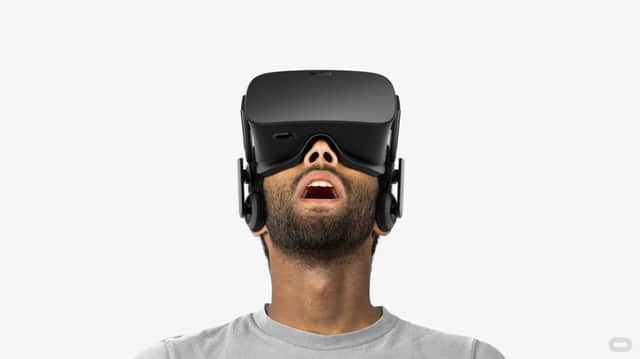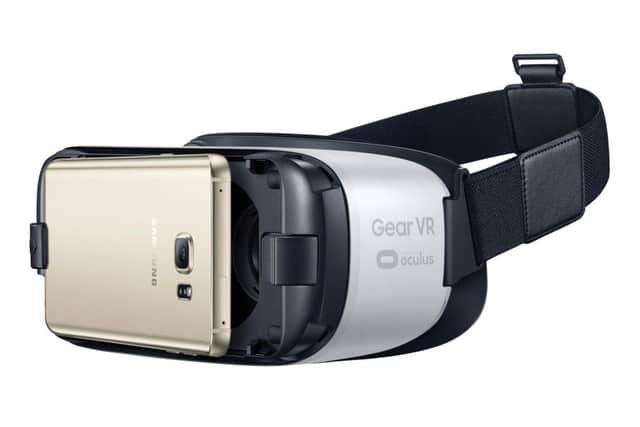Oculus: Now you can strap your phone to your face - how's that for convenience?


This is no longer science fiction; a readily-available device in Samsung’s new range now straps your phone to your face and renders you oblivious to all around you. So it’s official - not only is the art of conversation dead, but personal communication in any form is also out of the window.
Samsung’s VR Gear headset snaps to your phone, straps to your head and immerses you in a three-dimensional world of games and social media. The airtight seal means you can’t see the funny looks from passers-by who think you’re wearing some sort of World War Two gas mask.
Advertisement
Hide AdAdvertisement
Hide AdIt’s part of a range known as Oculus, which will also include a much more expensive headset, the Oculus Rift, for pairing with a Windows PC instead of a phone.


Oculus was created by Palmer Luckey, a young (and now rich) computer geek who began building the prototype in his parents’ garage in California, when he was just 17. At that age, the need to communicate face-to-face with other humans was perhaps not paramount - but now, thanks to a $2bn buyout by Facebook, we’re all being encouraged to embrace our inner introvert.
Facebook is already a virtual world of sorts, and given its investment in the new technology, it’s no surprise that the two worlds are beginning to merge. Headset users are able, for instance, to “create rooms to hang out and watch video streams in” with other Facebook users. It’s like going to someone’s house without having to even move.
The attraction of virtual reality is the sensation of “presence”, artificially-created motion tracking capable of making you believe you are somewhere else. If you’re familiar with computer games, you will have an idea of where that may be - a colourful and surreal computer-generated landscape previously available only in two dimensions on a TV screen.
Advertisement
Hide AdAdvertisement
Hide AdAll of this comes at a price: the Oculus Rift will cost around £500 on its upcoming launch, and requires a hefty gaming PC running alongside. The Samsung VR Gear headset is just £100 but works only with the costly Samsung S6 phone or better. In the autumn, Sony will join the party with a £350 headset for the PlayStation4 console, and we can expect more competition as the year progresses.


However, you don’t need pockets as deep as Facebook’s to dip your toe into the water: Google Cardboard is a DIY headset you build from some old fruit cartons and a pair of lenses. It’s basically a box with eye-holes that you hold to your face like one of those ViewMaster toys from the 1960s. Pre-cut cases complete with lenses can be had for around £35 and will automatically launch cardboard-compatible apps on your phone when you slot it inside. Available games include Star Wars VR, and you can take 360-degree photos and view them through the cardboard viewer.
Even at £35, I’m not suggesting you buy one today, but a little knowledge will at least let you communicate with the teenagers in your family before they finally lose the art.